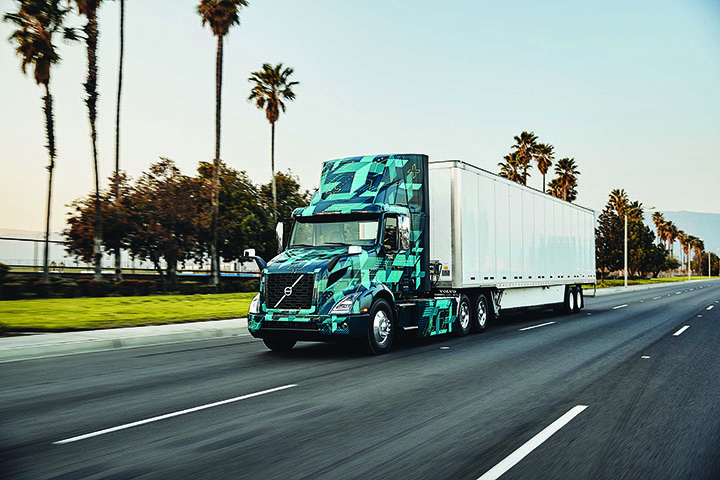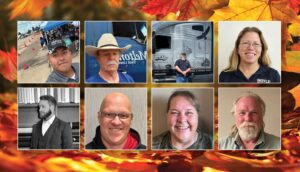On June 25, the California Air Resources Board (CARB) adopted the Advanced Clean Trucks (ACT) rule, a first-of-its-kind regulation that requires truck manufacturers to make the move from toxic-exhaust-emitting diesel engines to electric zero-emission vehicles. The transition is set to begin in 2024 and will culminate in 100% zero-emission trucks in California by 2045.
A statement from CARB described the move as “bold and timely,” adding that the ACT rule sets a clean-truck standard for the nation and the world and marks the most important air-pollution regulation to date implemented by California Gov. Gavin Newsom’s administration. The rule zeroes in on air pollution in the state’s most disadvantaged and polluted communities.
On July 14, in the wake of California’s resolution, 15 states (including California), plus the District of Columbia, announced a collaborative memorandum of understanding (MOU), pledging to work together to advance and accelerate the market for medium- and heavy-duty vehicles, including Class 8 trucks. The group’s goal is that 100% of new large pickup trucks and vans, delivery trucks, box trucks, school and transit buses, and big rigs be zero emissions by 2050. The group also set an interim goal of 30% zero-emission vehicle sales by 2030.
“California is proud to be joined by 14 other states and the District of Columbia in a push for clean, zero-emission trucks,” Newsom said. “Our efforts in California will be magnified through the efforts of this multistate coalition to reduce emissions and improve air quality, especially crucial in communities where our most vulnerable citizens live. By working together, we can move toward a cleaner future.”
Other states signing the MOU include Connecticut, Colorado, Hawaii, Maine, Maryland, Massachusetts, New Jersey, New York, North Carolina, Oregon, Pennsylvania, Rhode Island, Vermont and Washington.
By reducing diesel emissions, the group hopes to also reduce carbon pollution across the nation. The transportation industry is noted as the largest source of greenhouse emissions in the U.S., and commercial vehicles also contribute to unhealthy levels of smog in many of the states that signed the MOU.
“Now is the time to act regionally to protect the health of our residents and our climate by reducing emissions from medium- and heavy-duty trucks,” said Connecticut Gov. Ned Lamont. “In Connecticut, as in other states, our most vulnerable residents are hit hardest by the health effects of air pollution, including asthma and other respiratory ailments. I am looking forward to working with partner states through this agreement to leverage private sector ingenuity with smart public policy to transition to zero-emission vehicles.”
According to a July 14 statement issued by the Northeast States for Coordinated Air Use Management (NESCAUM), accelerating the electrification of trucks and buses is an essential step to achieve the deep economy-wide emission reductions needed to avoid the worst consequences of climate change and protect the health of millions of Americans.
“While trucks and buses only account for 4% of vehicles on the road, they are responsible for nearly 25% of total transportation sector greenhouse gas emissions,” the statement continued. “In fact, emissions from trucks are the fastest-growing source of greenhouse gases, and the number of truck miles traveled on the nation’s roads is forecast to continue to grow significantly in the coming decades.”
By converting commercial trucks and buses from diesel fuel to electric-powered engines, the group says it hopes to reduce air-pollution levels in communities that experience heavy truck traffic; adding that a large number of communities near major trucking corridors and distribution hubs are low-income.
“Reducing air pollution from medium- and heavy-duty vehicles will result in cleaner air for our communities — including low-income neighborhoods and communities of color that are often disproportionately impacted by environmental pollution,” said Basil Seggos, commissioner of the New York State Department of Environmental Conservation. “(This) announcement bolsters New York’s ongoing efforts to electrify the transportation sector and reduce climate pollution, helping to realize our ambitious emissions reduction goals and grow a powerful green economy to benefit all communities.”
In addition to providing public health benefits by reducing toxic emissions and helping prevent smog and other air pollution, the interim goal that 30% of commercial new-vehicle sales be zero-emission by 2030 could result in a total cost of ownership for electric trucks and buses to be on a par with that of conventionally fueled vehicles.
“The electric vehicle industry is primed for tremendous growth,” said D.C. Mayor Muriel Bowser. “We cannot afford to miss this opportunity to place clean transportation technology and infrastructure at the center of the nation’s economic recovery.”
Oregon Gov. Kate Brown said her state also hopes to have a positive impact through the MOU.
“Oregonians have been leading the way in adopting electric cars to lower emissions. Electrifying trucks, buses and delivery vehicles is the next logical step in cutting emissions, improving air quality and fighting climate change,” Brown said.
The 15 states and District of Columbia will work through an existing multistate zero-emissions vehicle (ZEV) task force created by NESCAUM as they seek to reach their goals. By promoting and investing in electric trucks and buses and the charging and fueling infrastructure needed to serve these vehicles, the signatory jurisdictions will support the creation of jobs and help build a resilient and clean economy, according to NESCAUM.
“We have seen our economy adapt to new models (during the COVID-19 crisis), such as increased reliance on deliveries, which also means more trucking,” said Shoshana Lew, executive director of the Colorado Department of Transportation. “As we move towards the future, it is critical that we consider how we can innovate together to ensure that the freight sector grows in a way that leads to both a thriving economy and cleaner air.”
Members of the U.S. PIRG, a federation of state public interest research groups, applauded the signing of the MOU, saying the group effort will help protect the health of Americans.
“Getting to school or commuting to work shouldn’t include a daily dose of toxic pollution or increase the chances that people will get sick,” said Matt Casale, transportation Campaign director for U.S. PIRG. “These states’ commitment to 100% zero-emission school and transit buses, along with other heavy- and medium-duty trucks, will help slash lung-damaging pollution and save lives. The sooner we get more electric buses and trucks on the road, the healthier our kids and communities will be.”
Linda Garner-Bunch has been with The Trucker since 2020, picking up the reins as managing editor in 2022. Linda has nearly 40 years of experience in the publishing industry, covering topics from the trucking and automotive industry to employment, real estate, home decor, crafts, cooking, weddings, high school sports — you name it, she’s written about it. She is also an experienced photographer, designer and copy editor who has a heartfelt love for the trucking industry, from the driver’s seat to the C-suite.














